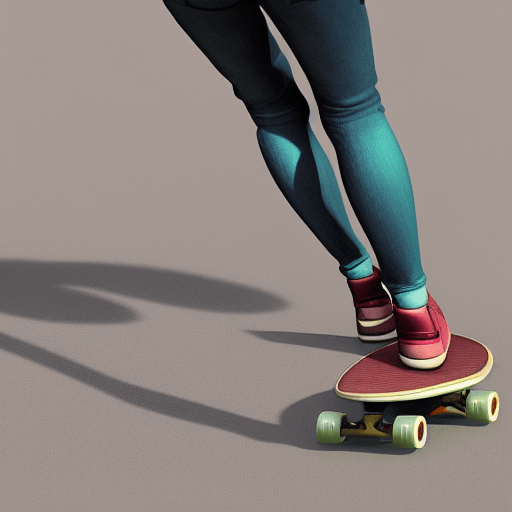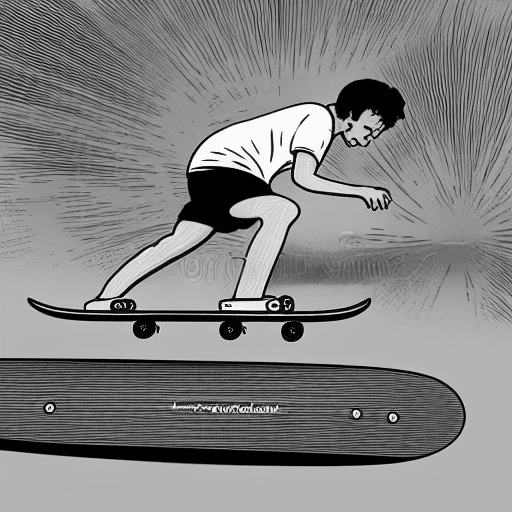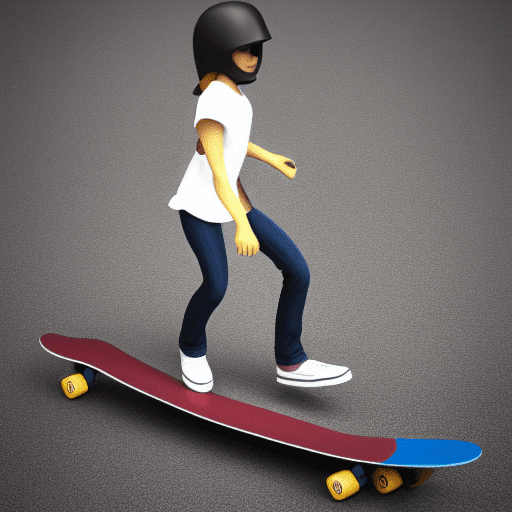Ok, it might be something that is tougher than it looks!
Do you want to learn how to balance on a skateboard?
Today is the day! We’re going to teach you the basics of balancing on a skateboard.
It can be a lot of fun, and it’s a great way to get some exercise.
We’ll cover everything from how to stand on the board to how to start moving.

The key to balancing on a skateboard is to keep your weight evenly distributed and your center of gravity low.
You can shift your weight from one foot to the other to help keep the board level, and use your arms for balance.
Practice in an open area away from obstacles, and pay attention to how your body feels as you ride.
With a little practice, you’ll be able to cruise around like a pro!
How to balance on a skateboard
Skateboarding is a skill that takes time and practice to master.
The key to balance is to keep your body centered over the board and to use your feet to control your speed and direction.
- Start by standing on the board with both feet set wide apart
- When your feet are wide apart you have more control over your weight distribution and thus, your balance is better
- Pro-Tip: Keep each foot covering the hardware (screws) at each end of the board. So your feed are over the trucks and wheels.
- Gently and gradually shift your weight from one foot to the other as you ‘feel’ for the sweet spot and your center of gravity.
- As you become more confident, you can try moving the board back and forth beneath your feet.
- When you can successfully ‘push’ the board forward and back, by simply using your weight to control the board, you will be able to stand on a skateboard successfully.
- If you are struggling, get low. Lower. The lower you are, the easier it is to control your weight. Bend Those Knees!
Why is it so hard to balance on a skateboard? The Physics Of It All
One of the hardest parts of skateboarding is keeping your balance.
Unlike a bicycle, a skateboard doesn’t have handlebars to help you stay upright.
Instead, you have to rely on your own sense of balance to stay on the board. This can be tricky, especially when you’re first learning how to skateboard.
Even experienced skateboarders can have trouble maintaining their balance, especially when trying to do tricks and ollies.
So why is balance so important in skateboarding? The answer lies in the physics of forces. When you’re skateboarding, your center of mass is constantly shifting.
To stay balanced, you have to constantly adjust the position of your feet and your weight distribution. This takes a lot of practice and coordination.
Great Beginner Excercise For Creating Great Balance: One method that can help is to place the skateboard near a flat wall. Then when you are working on your balance, put your hands on the wall to offer support. As you gain control (and confidence) slowly pull the board farther and farther from the wall, until you don’t need it at all!
How do you practice balance on a skateboard? Tricks and Tips
For anyone who has ever stepped on a skateboard, the importance of balance is immediately apparent.

The key to successful skateboarding is keeping your center of gravity low and evenly distributed between your two feet. This can be achieved by bending your knees and maintaining a low stance.
Once you have found your balance, you can begin to make small adjustments to your weight distribution in order to control the board. For example, if you want to turn left, you would shift your weight to your left foot.
Practice makes perfect when it comes to skateboarding, so don’t be discouraged if you don’t get it on the first try.
Exercises to increase beginner balance on a skateboard – Tips from the Pros

To improve your balance while skateboarding, it is important to do exercises that target the muscles used for skating. This is an example of cross-training and is an excellent technique for improving a skill.
A good way to start is by doing squats. Squats help to build strength in the legs and improve balance.
You can also try single-leg balances, which challenge your balance even further.
To do a single-leg balance, start by standing on one leg with your hands at your sides. Then, raise your other leg so that your thigh is parallel to the ground. Hold this position for 30 seconds, and then switch legs and repeat.
By doing these exercises regularly, you will see an improvement in your balance while skateboarding.
How long does it take to learn to balance on a skateboard?

For most people, it takes a few weeks to learn how to balance on a skateboard.
However, some people are able to pick it up more quickly, while others may never really feel comfortable riding one.
- The key is to practice regularly and be patient with yourself.
- Start by staying completely still on the board and just being able to stand straight up.
- Then, advance to rolling around on the ground at slow speeds to get a feel for the board.
- Once you’re comfortable with that, try pushing yourself along with one foot.
- Once you can do that without falling, you’re ready to try riding around your neighborhood.
- Take your time and be prepared for a few spills along the way. Always wear a helmet.
- With practice, you’ll eventually be able to stay upright and cruise around like a pro.
How do you not fall on a skateboard? Low Center of Gravity
The key to not falling on a skateboard is to keep your balance. This can be done by keeping your weight evenly distributed and your center of gravity low.
When you are first learning to skateboard, it is important to practice in an open area where you will not be surrounded by obstacles.
As you become more confident, you can start to skate in more challenging environments.
One pro secret for learning to get good at balancing on a skateboard is to do it on the carpet.
Placing the skateboard on the carpet before standing on it reduces the mobility of the wheels.
So, the board is less likely to shoot out from underneath you and you’ll feel much more control and stability.
Once you’re feeling good on the carpet, take it to the street (or sidewalk). Remember to always wear a helmet.
This method will help to build muscle memory and stabilize your legs, which will make it easier to stay upright on your board.
What is the best way to get used to balancing on a skateboard?
The best way to get used to balancing on a skateboard is by practicing in small, controlled environments. Start by standing on the board on top of the carpet, then use a nearby wall for stability then finally take it to your driveway, sidewalk or in a quiet park.
Once you feel comfortable standing, try pushing off with one foot and gliding for a short distance.
As you gain confidence, you can start practicing more challenging maneuvers, such as turning and stopping.
Balance tricks on a skateboard
Skateboarding is a fun way to get around, great exercise and can also be a great way to show off your balance and coordination.
To move quickly on a skateboard, you need to be able to balance your skateboard without using your hands.
This can be tricky, but with the tips mentioned above, you can do it. The key is to keep your center of gravity low and to use your body weight to shift your balance.
Tips on how to improve balance for skateboarding
Skateboarding is a challenging but rewarding sport that requires balance, coordination, and strength.
If you’re just getting started, or if you’re looking to improve your balance on the board, here are some tips to help you out.
First – Start Slow
Practice at slow speeds. It’s easier to keep your balance when you’re not going too fast, so take it easy at first and gradually build up your speed.
Second – Keep Your Weight Low
Focus on where you want to go and keep your eyes up.
It’s tempting to look down at your feet when you’re learning, but this will throw off your balance and make it harder to stay upright.
Instead, focus on where you want to go and trust your feet to get you there.
Third – Bend Those Knees
Keep your weight evenly distributed.
When you’re leaning into a turn, be sure to shift your weight in the same direction; otherwise, you’ll lose your balance and fall.
With a little practice, you’ll be carving turns like a pro in no time!
How to get better at riding a skateboard
Riding a skateboard takes practice, but there are a few things you can do to help you learn faster and improve your skills.
First, make sure you have the right equipment.
A good quality skateboard with well-maintained wheels and bearings will make a big difference in how easily you can ride.
Second, find a smooth, level surface to practice on.
This will help you avoid bumps and bruises as you learn to stay balanced on your board.
Third, start slow and try to master the basics before moving on to tricks and more advanced moves.
Once you have the hang of balancing, you can start learning tricks and turns. Remember to always stay aware of your surroundings, and to skate within your abilities.
With practice, you’ll be riding your skateboard all around town.
Article Sources
Jacks of Science sources the most authoritative, trustworthy, and highly recognized institutions for our article research. Learn more about our Editorial Teams process and diligence in verifying the accuracy of every article we publish.
